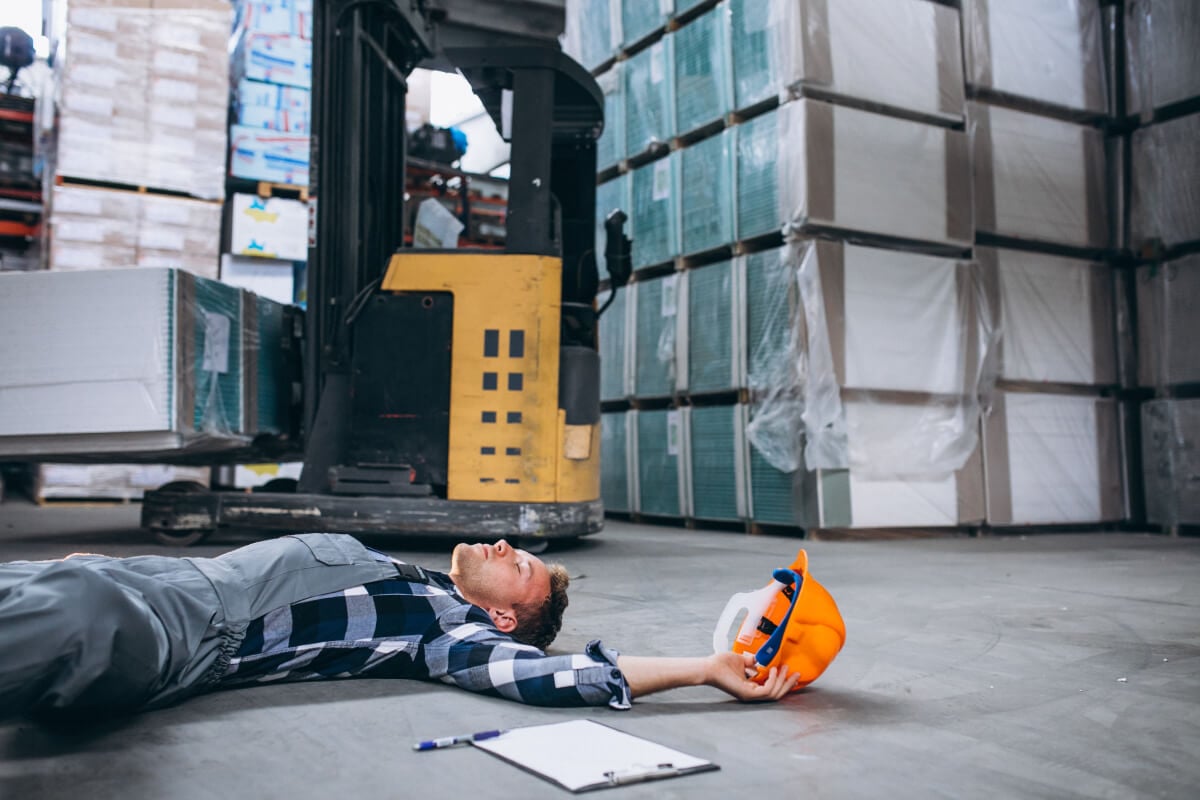
How to prevent workplace accidents?
The question of workplace accident prevention is at the heart of all debates in the business world. The figures are alarming. According to INRS, in 2023, more than 600,000 work accidents have been recorded in France. Figures which reveal a blatant lack of prevention measures. So how can businesses reduce this number? This involves implementing prevention and security actions adapted to each situation.
Summary
Understanding work-related risks
To prevent accidents, we must first understand the risks to which employees are exposed. According to the INRS, the most frequent workplace accidents are falls, traffic accidents, accidents with machines and accidents linked to exposure to dangerous substances.
It is therefore important to clearly identify the risks specific to each workstation. To do this, the employer can carry out an occupational risk assessment (ERP). This approach makes it possible to identify dangers, assess risks and define the prevention measures to be put in place.
Raising awareness among employees about safety at work
Employee awareness is a crucial step in preventing workplace accidents. It is essential to inform them about the risks to which they are exposed, but also to train them to adopt the right actions to avoid accidents.
Safety training can thus be organized within the company. This training may focus on the correct use of personal protective equipment (PPE), on the gestures and postures to adopt to avoid musculoskeletal disorders, or even on what to do in the event of an accident.
Implement appropriate prevention measures
Once the risks have been identified and employees have been made aware, appropriate prevention measures must be put in place. These can be of different natures.
These may involve technical measures, such as installing safety devices on machines or improving lighting in premises. It may also involve organizational measures, such as organizing work in such a way as to limit employees' exposure to risks or taking regular breaks to avoid fatigue.
A secure working environment
Finally, it is imperative to ensure the safety of the working environment. This requires compliance with current safety standards, but also the implementation of a professional risk prevention approach.
This includes ensuring the quality of the air in the premises, the ergonomics of workstations, the safety of electrical installations, etc. In the event of non-compliance with these standards, the employer may be held responsible in the event of an accident.
The crucial role of the employer
Ultimately, workplace accident prevention is a shared responsibility, but the employer has a crucial role to play. He must establish a real culture of safety within his company, at all levels.
This involves awareness raising, training, but also the involvement of all employees in this approach. It is therefore essential to implement preventive actions, to ensure regular communication on risks, to promote good practices, and above all, to listen to employees. Because after all, they are the first to be affected by workplace accidents.
Participatory approach to health and safety at work
The involvement of employees in the prevention approach is essential to ensure their protection in the professional environment. This participation makes it possible to take into account the realities on the ground and the daily experiences of workers.
The participatory approach can result in the establishment of health and safety committees at work, for example. These bodies are made up of employee and employer representatives. Their mission is to propose measures to improve safety and reduce professional risks in the company.
Consultation and involvement of workers in the prevention of workplace accidents can also involve satisfaction surveys, working groups or individual interviews. This involves collecting their opinions, suggestions and concerns regarding health and safety at work.
Moreover, it is important to communicate regularly on the prevention actions implemented within the company and on the results obtained. This can help strengthen the safety culture and increase employee motivation to comply with safety rules and procedures.
Prevention of specific workplace accidents
Certain work situations are particularly risky and require specific prevention measures. This is particularly the case for work at height which is the cause of numerous fatal workplace accidents. To prevent falls from height, it is essential to put in place collective protection (guardrails, nets, etc.) and to provide suitable personal protective equipment (safety harness, lifeline, etc.).
The road work accident also represents a significant proportion of work accidents. To prevent this, it is recommended to develop a company road safety policy, raise employee awareness of road risks and implement specific measures, such as respecting rest times for drivers.
Similarly, handling dangerous machines or exposure to toxic substances requires particular vigilance and the implementation of specific safety measures to avoid work accidents.
Conclusion
The prevention of workplace accidents remains a major issue for companies and employees. It is essential that each actor, at their own level, takes part in this process to ensure a safe and healthy working environment.
The employer has a crucial role to play by establishing a culture of safety at work, by implementing appropriate prevention measures and by involving employees in this approach. Workers, for their part, have the responsibility to respect the rules and report any dangerous work situation.
Finally, it is important to remember that the prevention of workplace accidents is an approach that must be constantly reassessed and improved. Because beyond the human and financial costs linked to work accidents, the health and safety of employees are, above all, a fundamental right.






